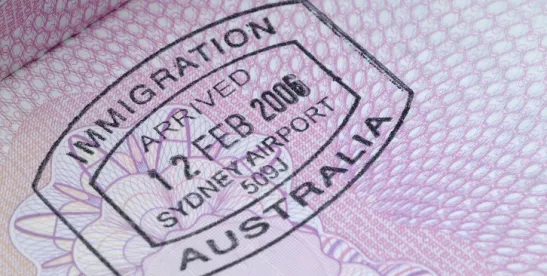On 18 April 2017, Prime Minister Malcolm Turnbull announced the Australian Government's plan to abolish the Temporary Work (Skilled) 457 visa (457 visa) and replace it with a new temporary visa framework.
According to information provided by the Department of Immigration and Border Protection (DIBP), the implementation of reforms required to abolish the 457 visa and replace it with the new Temporary Skilled Shortage (TSS) visa will begin immediately on 19 April 2017 and will be completed in March 2018.
Important Information for Employers
Immigration Minister Peter Dutton has confirmed that 457 visa holders currently in Australia will not be affected by the new arrangements and will continue under their current conditions.
However, given the implementation of certain reforms which commenced on 19 April 2017 (see below), employers will be unable to avoid the changes to the list of eligible skilled occupations and/or visa validity periods by quickly lodging new 457 visa nominations or 457 visa applications.
Employers who are contemplating nomination applications or who have active nominations or 457 visa applications should immediately seek advice about:
-
whether to withdraw the applications and seek a refund as the occupation may no longer be on the relevant occupation lists
-
whether caveats may impact any 457 visa applications employers have prepared but not yet lodged with the DIBP for approval.
The Government will release further information on the reforms. In the meantime, we are closely monitoring the timing and the content of any proposed amendments and we are ready to assist employers in meeting the new legislative requirements.
Changes From 19 April 2017
Changes to Approved Occupation List – Phase 1
Amendments have already been made to the list of approved occupations for the skilled migration program. These occupations are listed in a legislative instrument that contains two schedules. From 19 April 2017, the lists contained in the schedules have been re-named as follows.
-
Medium and Long-term Strategic Skills List (MLTSSL) which replaces the previous Skilled Occupation List (SOL).
-
Short-term Skilled Occupation List (STSOL) which replaces the previous Consolidated Sponsored Occupation List (CSOL).
A combined list of the new occupations can be found here.
In addition, some significant changes have been made to occupations eligible for temporary and permanent skilled migration:
-
216 occupations have been removed from the list of eligible occupations for a 457 visa (651 down to 435 occupations) caveats have been added to 59 other occupations to limit their use in the context of the 457 visa program.
-
Caveats relate to the level of work experience, regional location and certain occupation specific caveats.
Changes to Visa Validity
The maximum duration of 457 visas issued from 19 April 2017 for occupations that are on the new STSOL will be two years (with the possibility of a limited extension after this time). This change includes primary visa applications which have been lodged, but which are still decision pending on 19 April 2017.
Occupations on the new MLTSSL will continue to be eligible for a maximum duration of four years.
Changes From 1 July 2017
Further changes have been flagged for 1 July 2017, including:
-
possible further adjustments to eligible occupation lists
-
removal of English language salary exemption threshold, which exempts applicants whose salary is over AUD96,400 from the English language requirement
-
an expansion of client cohorts for whom mandatory skills assessments are required
-
minor changes to the training benchmarks for subclass 457 sponsors
-
mandatory criminal record check.
The Australian Government has identified further changes to be made by December 2017, with the completion date for the reforms set for March 2018.
Key Changes in the New TSS Visa
The key features of the new TSS visa that differ from the exiting 457 visa include:
-
two available streams: a Short-Term stream (valid for two years), and a Medium-Term stream (valid for four years) with higher skills and English requirements
-
changed permanent residency pathways: no pathway for Short-Term stream and pathway for Medium-Term stream after three years
-
capacity for only one renewal onshore under the Short-Term stream
-
a new occupation list that better targets skills shortage
-
two year minimum employment experience in the skilled occupation nominated
-
a minimum market salary rate requirement
-
mandatory labour market testing (unless international trade obligations apply)
-
a non-discriminatory workforce test to ensure employers are not actively discriminating against Australian workers
-
establishment of a new training fund to strengthen requirements to train Australian workers
-
mandatory criminal record check
-
collection of Tax File Numbers and data matching with the Australian Tax Office to ensure that employers are meeting nominated salary requirements.
The requirements for employer sponsored permanent visas are also flagged for change, including:
-
tighter English language requirements a three year minimum employment experience requirement for applicants
-
applicant must be under the maximum age limit of 45 at the time of application
-
strengthened requirements to train Australian workers
-
requirement for employer to pay market salary rate and satisfy Temporary Skilled Migration Income Threshold (currently at AUD53,900 per annum).
Concessions for employers in regional Australia will continue to be available such as nomination fee waivers, age exemptions and occupations that reflect local skill shortage.
See Part 3 of this Series: The Reform Continues – an Update on the 1 July 2017 Australia Visa Changes




 />i
/>i

